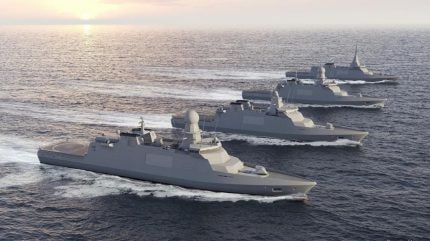
OCCAR – or the Organisation for Joint Armament Cooperation, as the English translation goes – has initiated the second phase of the Europe’s Modular Multirole Patrol Corvette (MMPC).
Approximately 110 metres (m) long and weighing 3,000 tonnes (t), the future vessel will be based on a mono-hull structure and serve as a ‘Second Line Ship’, or as Nato nomenclature designates the platform: a ‘Limited Warship Unit’.

Discover B2B Marketing That Performs
Combine business intelligence and editorial excellence to reach engaged professionals across 36 leading media platforms.
OCCAR, Europe’s project overseer, serves as the contracting authority with a mandate from five participating member states: France, Greece, Italy, Norway and Spain.
Likewise, the project is pursued by a consortium of industrial players coordinated by Naviris. It includes Fincantieri, Naval Group and 39 other subcontractors from 12 European countries.
Under this next stage of development, Europe’s defence programme watchdog will seek to complete the Critical Design Review followed by the construction of two prototypes, one modelling each of the two versions of the MMPC.
This work will begin in 2025 and is anticipated to last four years, concluding in 2029.

US Tariffs are shifting - will you react or anticipate?
Don’t let policy changes catch you off guard. Stay proactive with real-time data and expert analysis.
By GlobalDataOne prototype will represent the Full Combat Multipurpose variant, equipped with additional capabilities compared to the other prototype, which will model the Long Range Multipurpose version, designed with extended endurance in mind.
With a maximum grant budget of €154.5m ($168m), the MMPC concept is set to replace several ageing surface combatants in European navy fleets.
This includes France’s D’Estienne d’Orves class, comparable to a corvette and now more than 40-years-old; Italy’s Lerici-class; and Greece’s numerous light combat vessels – none of which are less than 20-years-old.
“The design aims to be flexible, more energy-efficient, greener, safer, more interoperable and cyber-secured,” stated OCCAR. “MMPC is envisaged as a platform [that] may be used by different European countries based on a shared baseline which can be tailored to national needs.”



